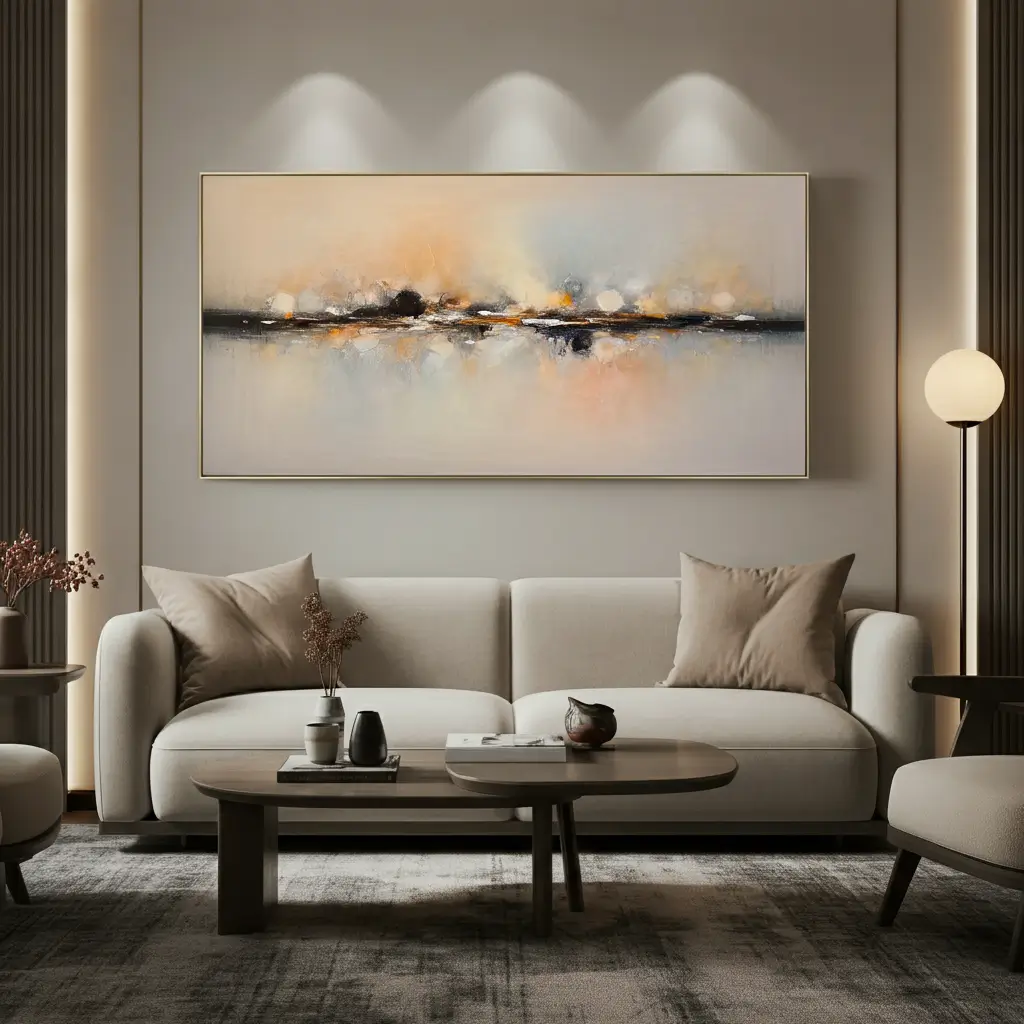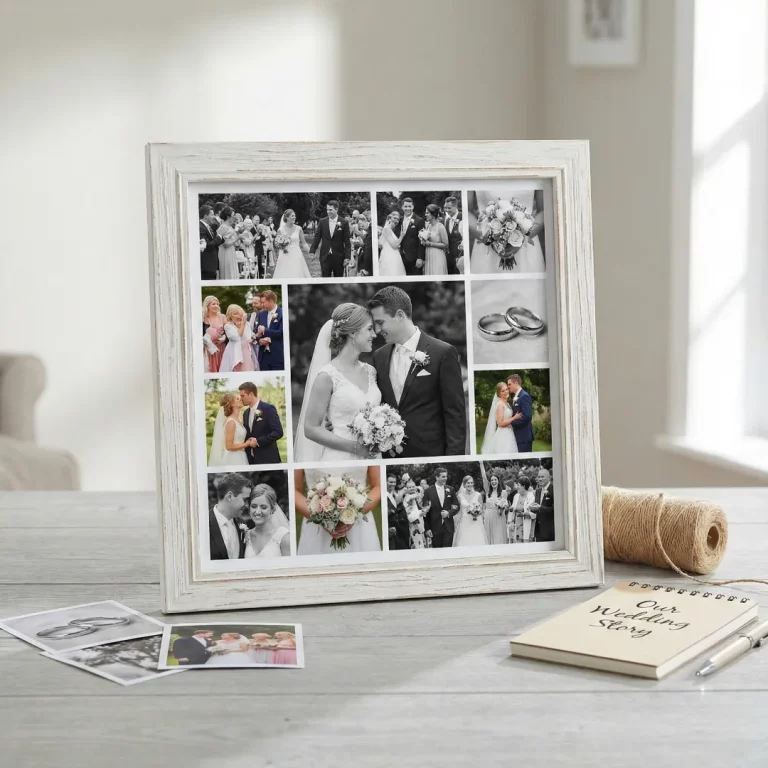Long paintings possess a unique ability to transform spaces in ways that traditional square or rectangular artworks simply cannot match. These elongated masterpieces create visual drama, guide the eye through a room, and establish focal points that command attention whilst maintaining elegance.
Whether you’re drawn to sweeping landscapes, abstract compositions, or modern photography stretched across generous dimensions, understanding how to select and display a long painting effectively can elevate your interior design from ordinary to extraordinary. The key lies in recognising how these distinctive proportions interact with your existing space and décor.
Many homeowners shy away from long paintings, uncertain about placement or worried about overwhelming their rooms. However, when chosen thoughtfully and positioned strategically, these artworks become powerful design elements that enhance rather than dominate your living environment.
Understanding Long Painting Proportions
What Defines a Long Painting?
A long painting typically features a width-to-height ratio of 2:1 or greater, creating that distinctive horizontal emphasis. Common dimensions include:
- Panoramic format: 36″ x 12″ or 48″ x 16″
- Extended landscape: 60″ x 20″ or 72″ x 24″
- Statement pieces: 84″ x 28″ or larger
These proportions create a sense of movement and flow that draws viewers into the artwork whilst spreading visual weight across a broader area.
The Psychology of Horizontal Art
Horizontal orientations naturally create feelings of calm, stability, and spaciousness. A long painting can make narrow rooms appear wider and low ceilings feel more expansive. This psychological effect makes them particularly valuable in modern homes where open-plan living requires careful visual balance.
Choosing the Perfect Long Painting for Your Space
Assessing Your Wall Space
Before selecting your long painting, measure your available wall space carefully. The artwork should occupy roughly 60-75% of the wall width for optimal visual impact. For example, a 10-foot wall would accommodate a 6-8 foot long painting beautifully.
Consider these factors:
- Wall height: Ensure sufficient space above and below the artwork
- Furniture placement: Account for sofas, sideboards, or other pieces below
- Architectural features: Work around windows, doorways, or built-in elements
- Lighting conditions: Natural and artificial light sources affect colour perception
Style Considerations
Your long painting should complement your existing décor whilst adding visual interest. Popular styles include:
Abstract Compositions
- Bold colours and geometric forms
- Perfect for contemporary interiors
- Create conversation starters
Landscape Photography
- Bring natural beauty indoors
- Ideal for minimalist or Scandinavian styles
- Provide calming focal points
Architectural Studies
- City skylines or structural details
- Complement industrial or modern décor
- Add sophistication to professional spaces
Artistic Reproductions
- Classic paintings adapted to long formats
- Suit traditional or eclectic interiors
- Offer cultural depth and refinement
Strategic Placement Techniques
Above Sofas and Seating Areas
The most popular placement for a long painting is above a sofa or sectional seating. This positioning creates a natural relationship between the furniture and artwork whilst establishing a clear focal point in living areas.
Optimal positioning guidelines:
- Hang 6-8 inches above the sofa back
- Centre the painting horizontally with the furniture
- Ensure the artwork doesn’t exceed the sofa’s width
- Consider the viewing angle from various seating positions
Hallway Gallery Statements
Long paintings excel in hallways and corridors, where their horizontal emphasis complements the space’s natural flow. These areas often feature lengthy walls that traditional artwork cannot properly fill.
Hallway hanging tips:
- Position at eye level (57-60 inches to centre)
- Leave adequate space at both ends
- Consider lighting to prevent shadows
- Use multiple smaller long paintings for extended corridors
Bedroom Headboard Alternatives
Replace traditional headboards with striking long paintings to create sophisticated bedroom focal points. This approach works particularly well in master bedrooms where you want to establish a hotel-like ambience.
Bedroom placement considerations:
- Hang 6-12 inches above the mattress
- Ensure the painting doesn’t extend beyond the bed’s width
- Choose calming colours for better sleep quality
- Consider the view from both lying and sitting positions
Framing and Display Options
Framing Oversized Prints
Long paintings present unique framing challenges due to their extended dimensions. The frame must provide adequate support whilst complementing the artwork’s proportions.
Frame selection criteria:
- Strength: Ensure the frame can support the artwork’s weight
- Proportions: Avoid frames that appear too heavy or delicate
- Materials: Choose materials that complement your décor
- Mounting: Consider professional installation for larger pieces
Matting Considerations
Matting can enhance a long painting’s impact by creating visual breathing room. However, standard matting proportions may not suit elongated formats.
Matting guidelines:
- Use consistent mat widths on all sides
- Consider double matting for added depth
- Choose neutral colours that don’t compete with the artwork
- Ensure the mat doesn’t overwhelm smaller long paintings
Canvas Frames and Wraps
Canvas prints offer excellent options for long paintings, particularly for contemporary or casual settings. Gallery wraps eliminate the need for traditional frames whilst maintaining professional presentation.
Lighting Your Long Painting
Natural Light Considerations
Position your long painting to take advantage of natural light whilst avoiding direct sunlight that could cause fading. North-facing walls typically provide the most consistent illumination throughout the day.
Natural lighting tips:
- Avoid placing artwork opposite windows with harsh light
- Consider seasonal changes in light direction
- Use UV-filtering glass or acrylic for valuable pieces
- Position artwork where morning or evening light enhances colours
Artificial Lighting Solutions
Picture lights, track lighting, or strategically placed spotlights can dramatically enhance your long painting’s impact, especially during evening hours.
Lighting techniques:
- Use LED lights to minimise heat and UV damage
- Position lights to eliminate shadows and glare
- Consider dimmer switches for adjustable ambience
- Maintain consistent colour temperature across all light sources
Common Mistakes to Avoid
Proportional Errors
The most frequent mistake involves choosing a long painting that’s either too small or too large for the intended space. A tiny long painting on a massive wall looks lost, whilst an oversized piece can overwhelm a room.
Poor Placement Height
Hanging artwork too high or too low disrupts the visual relationship between the painting and the surrounding elements. Always consider the primary viewing positions when determining height.
Ignoring Colour Harmony
A long painting’s extended format means it occupies significant visual space. Colours that clash with existing décor become more problematic than with smaller artworks.
Inadequate Support
Long paintings require robust hanging systems due to their weight distribution. Inadequate support can result in sagging frames or, worse, fallen artwork.
Creating Gallery Walls with Long Paintings
Mixed Format Arrangements
Combine your long painting with smaller square or rectangular pieces to create dynamic gallery walls. The long painting typically serves as the anchor piece, with smaller works arranged around it.
Gallery wall composition:
- Start with the long painting as your centrepiece
- Add smaller pieces above or below
- Maintain consistent spacing between elements
- Consider colour and style cohesion across all pieces
Layered Approaches
For casual, eclectic looks, consider layering your long painting with other artwork on shelves or ledges. This approach allows for easy rearrangement and seasonal updates.
Seasonal and Temporary Displays
Rotating Collections
Long paintings lend themselves well to seasonal rotation, allowing you to refresh your décor throughout the year. Store artwork properly during the off-season to maintain its condition.
Temporary Installations
For renters or those who frequently redecorate, consider temporary hanging solutions that won’t damage walls. Command strips rated for appropriate weights can support many long paintings effectively.
Making the Most of Your Long Painting Investment
A well-chosen long painting becomes more than décor—it’s an investment in your home’s aesthetic appeal and your daily living experience. These distinctive artworks create lasting impressions on guests whilst providing ongoing enjoyment for residents.
Consider starting with a long statement painting in your main living area, then gradually expanding your collection as you become more comfortable with its unique requirements. Remember that the best long painting is one that speaks to you personally whilst enhancing your home’s overall design narrative.
Whether you choose a serene landscape, an abstract composition, or a striking photographic print, your long painting will serve as a sophisticated focal point that transforms your space for years to come. The key is matching the right artwork to the right space with thoughtful consideration of proportions, placement, and personal style preferences.





